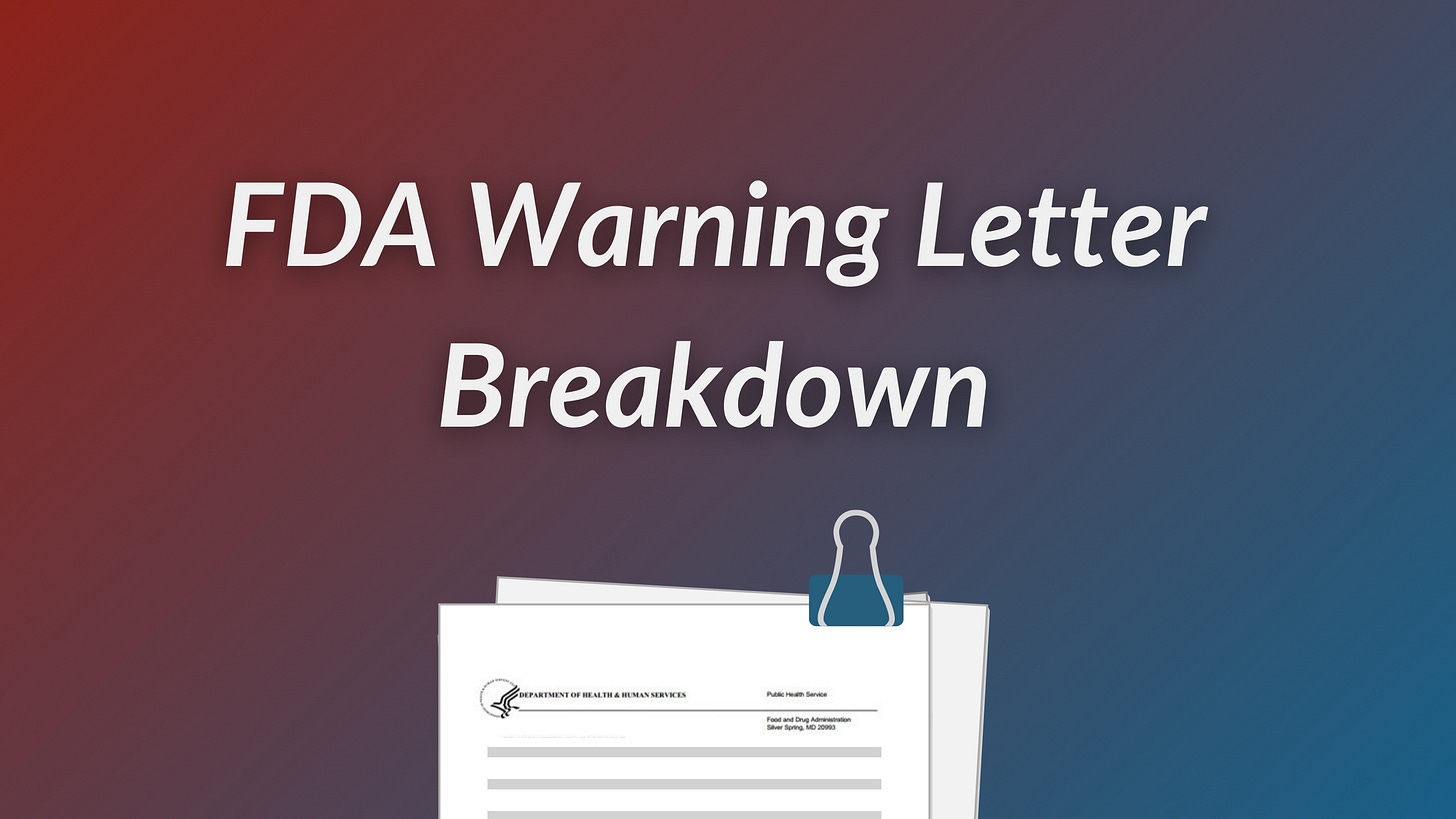FDA Warning Letter Breakdown: Identity Testing, Expired Components & QU Oversight Failures at a Homeopathic Drug Manufacturer
Why CDER cited repeat CGMP lapses, expired ingredients, and absent supplier validation at a homeopathic firm—and what all manufacturers can learn from it.
This breakdown is available for paid subscribers. Only paid subscribers get regular full access to our breakdowns and other analyses. If you’re not already a paid subscriber, you can upgrade here.
Want to stay out of our warning letter breakdowns? Contact us to access our global network of 3,250+ consultants and 250+ former FDA employees. We run audits, mock inspections, and remediation for 17 of the top 25 life science firms.
On November 3, CDER issued a warning letter to a homeopathic drug firm in New Zealand following an inspection from May 19–21, 2025. The letter cites major CGMP violations under 21 CFR Parts 210 and 211 for finished pharmaceuticals, emphasizing:
Complete failure to perform identity testing of incoming components, relying solely on supplier COAs without qualification.
Use of solvents containing unacceptably high levels of (b)(4) and expired homeopathic actives—some over 14 years past expiration—to manufacture U.S.-distributed products.
A non-functioning Quality Unit, repeating findings from 2014 and 2019 inspections.
The firm is now under Import Alert 66-40 and has not responded to the FDA’s Form 483 as of the letter’s issuance.
Let’s run through it.
Identity testing was abandoned entirely, and supplier trust replaced science
21 CFR 211.84(d)(1) and (2) clearly require firms to verify the identity of each component lot and validate supplier analyses periodically. Investigators found the firm performed no identity tests at all on incoming components for its homeopathic drugs, accepting COAs “as is.”
Worse, the firm used a solvent with a percentage of an ingredient orders of magnitude higher than the limits set by the U.S. Pharmacopeia to produce tablets for the U.S. market. The FDA notes that the ingredient has caused fatal poisonings worldwide, underscoring that even “homeopathic” labeling does not excuse toxic component control failures.
The firm also used actives more than 14 years beyond expiration, with no testing to verify continued potency or purity. This is a repeat violation from 2019, signaling what seems to us like a systemic disregard for the fundamentals of material control.
Ask yourself:
Are supplier COAs ever accepted without initial and periodic validation of test methods and reliability?
Do you perform at least one specific identity test per incoming lot—always?
How are expired components prevented from entering production, and are retest intervals defined by data or habit?
Would your current system detect a solvent or excipient with unsafe impurity content before use?
A seemingly non-functioning Quality Unit
Under 21 CFR 211.22, a firm’s QU must ensure compliance and disposition control. Investigators concluded it did neither inside this firm. Key failures included:
No adequate batch production or control records documenting completion of each critical step (211.188(b)).
No written procedures governing deviations, investigations, or CAPA (211.22(d)).
No qualified personnel to approve or reject components and drug products (211.22(a)).
All three gaps are repeat findings—previously cited in 2014 and 2019. The FDA explicitly called the firm’s quality systems “inadequate” and directed them to FDA’s Quality Systems Approach to Pharmaceutical CGMP Regulations guidance as a roadmap for basic compliance, a signal that inspectors perceived near-total absence of a functioning quality system.
Ask yourself:
Does your QU truly have the authority and resources to stop production, reject components, or require re-investigation?
Are CAPA, deviation, and investigation procedures documented, enforced, and periodically evaluated for effectiveness?
Is there an auditable record that every batch receives complete QU review before disposition?
Could your current structure withstand a re-inspection looking for QU empowerment evidence—training, headcount, meeting minutes, management reporting lines?
Repeat violations expose weak executive oversight
The FDA’s timeline is clear here:
2014 inspection → citations for missing records.
2019 inspection → citations for supplier reliance and QU gaps.
2025 inspection → same findings, uncorrected.
The agency writes:
“Repeated failures demonstrate that executive management oversight and control over the manufacture of drugs is inadequate.”



